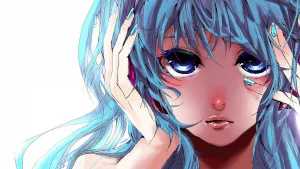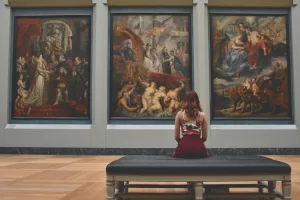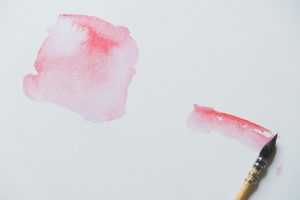Color mixing in oil painting is a crucial skill that can greatly enhance the depth and vibrancy of your artwork. By understanding the principles of color theory and mastering various techniques, you can create a wide range of colors and achieve the desired visual effects in your paintings. Understanding Color Theory Before delving into color mixing, it is essential to have a solid grasp of color theory. Familiarize yourself with the color wheel, primary colors (red, blue, yellow), secondary colors (orange, green, purple), and tertiary colors. Understanding how colors interact and influence each other will serve as a foundation for successful color mixing. It is important to comprehend concepts such as complementary colors and color temperature, as they play a significant role in creating harmonious color schemes in your paintings.
The Role of Complementary Colors
Complementary colors are pairs of colors that, when combined, cancel each other out. This means they produce a grayscale color like white or black when combined. However, when placed next to each other, they create the strongest contrast and reinforce each other’s intensity. For example, red and green are complementary colors. Using them wisely can make certain elements of your painting pop, creating a focal point that draws the viewer’s eye.
Temperature and Its Effects
Color temperature refers to the warmth or coolness of a color. Warm colors (reds, oranges, yellows) tend to advance in a painting, making them ideal for foreground elements. Cool colors (blues, greens, purples) tend to recede, which can be useful for backgrounds. Understanding and manipulating color temperature can add depth to your work, creating a more three-dimensional effect.
Start with a Limited Palette
When starting out with oil painting, it is advisable to begin with a limited palette of colors. Using just a few colors allows you to focus on color mixing techniques and develop a better understanding of how different pigments interact with each other. This limitation encourages you to be more creative with your color mixing, as you learn to create a broad spectrum of hues from a minimal selection of paints.
Benefits of a Limited Palette
A limited palette helps avoid the common mistake of over-mixing, which can result in muddy colors. By restricting your choices, you are forced to rely on mixing to achieve the desired shade, which improves your understanding and skills over time. You might start with primary colors and a couple of earth tones like burnt sienna or yellow ochre, which can be mixed to create a wide array of colors.
Expanding Gradually
As you gain more experience, you can gradually expand your color palette to include a wider range of colors while still maintaining control and harmony in your paintings. Introduce new colors one at a time and practice mixing them with your existing palette to observe how they interact. This gradual expansion allows you to maintain a harmonious color scheme while exploring new possibilities.
Experiment with Different Mixing Techniques
There are several techniques for mixing colors in oil painting, such as blending on the palette, layering colors on the canvas, and using glazes. Each technique offers a unique way to manipulate and control color in your paintings.
Blending on the Palette
Blending on the palette allows you to precisely control the color mixture before applying it to the canvas. This method is particularly useful for achieving specific shades and tones. It involves mixing small amounts of each color with a palette knife until the desired hue is achieved. This technique is ideal for artists who prefer a controlled and measured approach to color application.
Layering Colors on the Canvas
Layering involves applying one color over another, often after the first layer has dried. This technique can create depth and complexity in your artwork. For example, you might start with a dark base layer and gradually build up lighter colors on top. This method can be used to create subtle transitions and variations in tone, enhancing the realism and texture of your painting.
Using Glazes
Using glazes involves applying thin layers of transparent color over dry paint. This can enhance the luminosity and richness of your colors. Glazing is a powerful technique for creating depth and vibrancy in your work. For instance, a thin glaze of a warm color over a cool base can create a glowing effect, adding a sense of light and atmosphere to your painting.
Impasto and Textural Effects
For artists looking to add texture and dynamic brushwork to their paintings, impasto is a valuable technique. By applying thick layers of paint, you can create a tactile surface that interacts with light in interesting ways. This technique is particularly effective for creating highlights and adding a three-dimensional quality to your work.
Use a Neutral Background for Color Mixing
When mixing colors, it is helpful to have a neutral background to assess the true color of your mixtures. A gray or white surface allows you to see the undertones and values of the colors more accurately. This can prevent your colors from appearing too bright or dull when applied to a different surface.
Consistency in Color Judgment
A neutral background provides a consistent reference point for judging the intensity and saturation of your colors. This consistency is crucial for making informed decisions about color mixing and application in your paintings. By using a neutral surface, you ensure that your color assessments are not skewed by surrounding hues.
Avoiding Color Bias
Working on a neutral background helps you avoid color bias, where the perception of a color is affected by surrounding colors. This is particularly important when mixing subtle shades and tones. By eliminating background interference, you can achieve more accurate color mixes.
Keep a Record of your Mixtures
Keeping a record of the color mixtures you create can be beneficial for maintaining color consistency in your artwork. This can be done by labeling your mixtures, creating a color chart, or simply writing down the ratios of each pigment used.
Creating a Color Chart
A color chart serves as a visual reference for your color mixes. By painting swatches of each mixture on a chart, you can see how colors look when dry and how they compare to one another. This can be an invaluable tool for planning future paintings and recreating specific hues.
Documenting Ratios
Writing down the ratios of each pigment used ensures you can recreate colors accurately. This is particularly useful for large compositions that require consistent color application across different sessions. By documenting your color mixing process, you can track your experiments, successes, and failures, allowing you to build upon your knowledge and continuously improve your painting skills.
Developing a Signature Palette
By keeping detailed records, you can develop your unique color palette and signature style over time. This organized approach helps you refine your preferences and create a cohesive body of work. It allows you to identify which colors and combinations resonate most with your artistic vision.
Addressing Common Color Mixing Challenges
Despite careful planning and practice, artists often encounter challenges in color mixing. Let’s explore some common issues and how to overcome them.
Avoiding Muddy Colors
Muddy colors occur when too many colors are mixed together, losing vibrancy and clarity. To avoid this, limit the number of pigments in a mixture and focus on complementary and analogous colors. If a color starts looking muddy, consider adding a touch of a complementary color to neutralize it or lighten the hue with a bit of white.
Correcting Color Imbalances
Sometimes a mixture might lean too heavily towards one color, disrupting the desired balance. In such cases, assess the mixture carefully and add small amounts of the opposite color to bring it back into balance. For instance, if a green is too yellow, adding blue can correct the imbalance.
Managing Drying Times
Oil paints have varied drying times, which can affect how colors mix and layer. Faster-drying colors can be layered over slower-drying ones to build depth without disturbing the underlying layers. Understanding the drying time of your paints allows you to plan your composition effectively.
Dealing with Color Shift
Some oil paints change color slightly as they dry. To anticipate this, it’s important to test color mixes and observe their drying behavior on a scrap piece of canvas. This helps you adjust your mixes to achieve the desired effect in the final painting.
Practical Tips for Successful Color Mixing
Here are some additional tips to enhance your color mixing skills:
- Use High-Quality Paints: Invest in artist-grade paints, as they offer better pigment concentration and color stability.
- Clean Your Brushes: Frequently clean brushes when switching between colors to avoid unwanted mixing and contamination.
- Mix Gradually: Add small amounts of color to your mixes gradually to achieve precision and prevent over-mixing.
- Test on a Small Area: Before applying a new mix to your canvas, test it on a small area to ensure it meets your expectations.
- Consider Lighting Conditions: Different lighting can affect how a color appears; always check your mixes under natural light.
Embracing Creative Exploration
Finally, remember that color mixing is as much about experimentation as it is about rules. Don’t be afraid to explore unconventional combinations and techniques. Some of the most striking effects come from happy accidents and creative risks.
References and Further Learning
For further exploration of color mixing in oil painting, you may refer to books like “Color Mixing Bible: All You’ll Ever Need to Know About Mixing Pigments in Oil, Acrylic, Watercolor, Gouache, Soft Pastel, Pencil, and Ink” by Ian Sidaway and Hazel Harrison. These resources provide in-depth insights and practical guidance on color mixing techniques, color theory, and pigment properties, helping you expand your knowledge and elevate your oil painting proficiency.
By mastering these techniques and understanding the intricacies of color mixing, you’ll be well on your way to creating paintings that are not only technically proficient but also rich in depth and emotion. Happy painting!



